To be completely honest, the code that is described in this blog is already more than a year old. I just wanted to catch up with the current state of my project. I will therefore try to write several blogs in the next couple of days describing what has been going on…
After my first experiments with earth-like planets I wanted to experiment with creating Jupiter-like gas giants in GLSL.
The approach is still noise based but instead of creating a height map we now want to create something that looks like turbulent clouds.
The following screenshots where created using the GLSL code below:
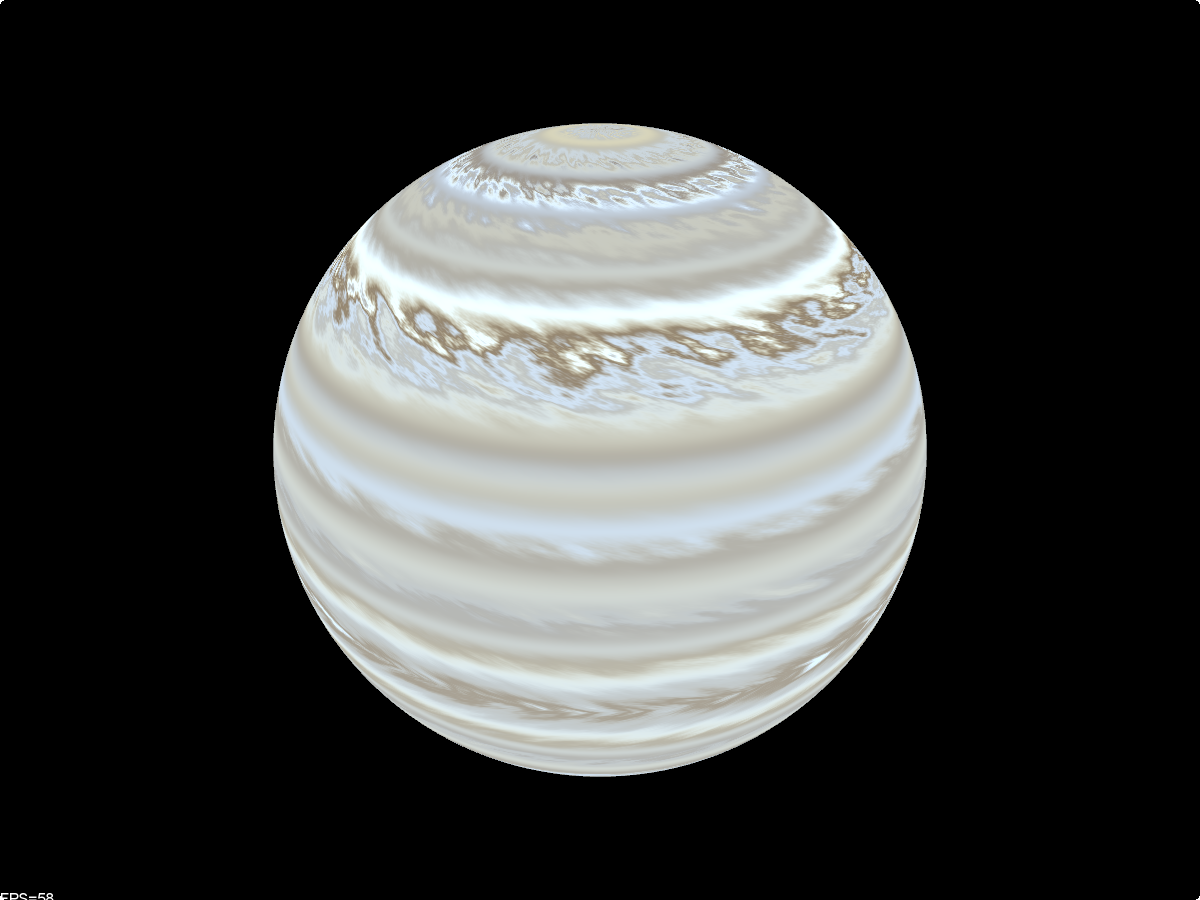
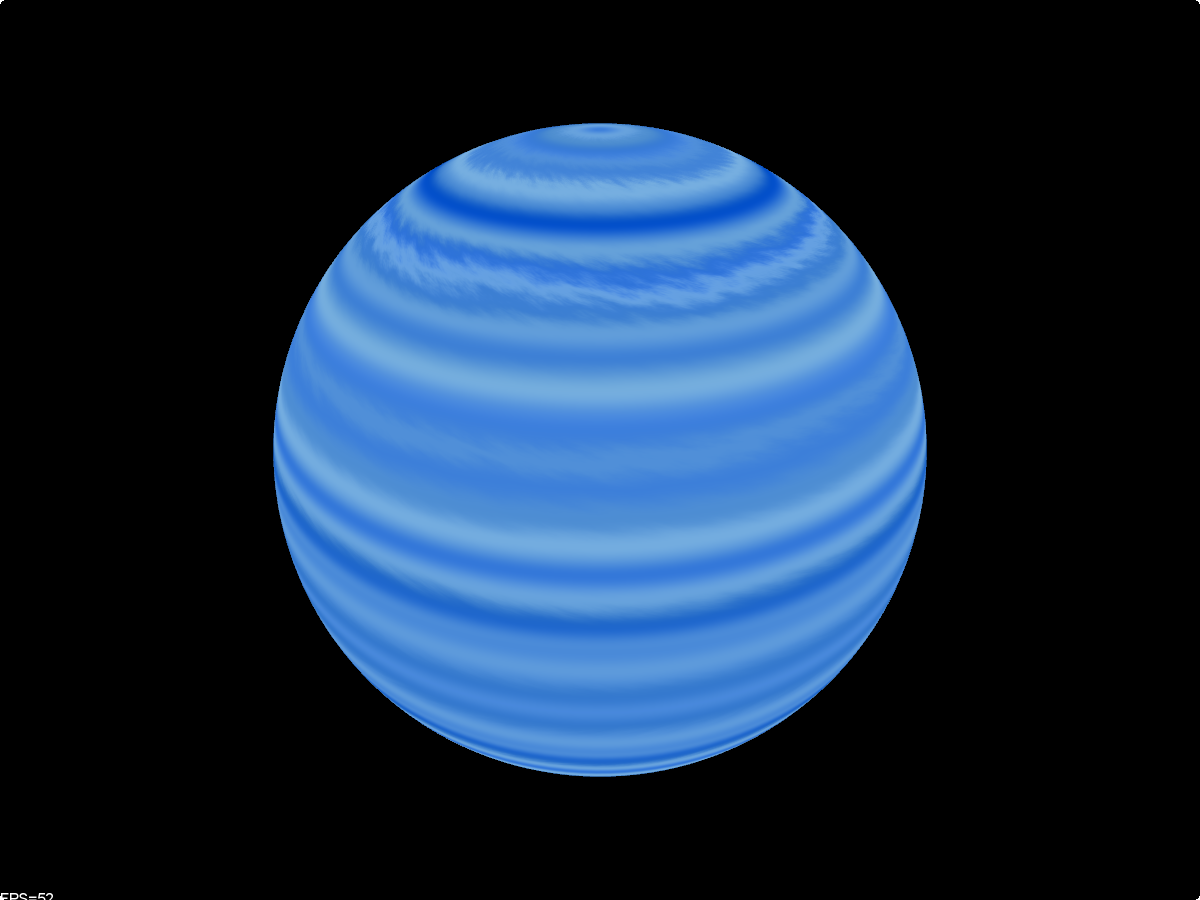
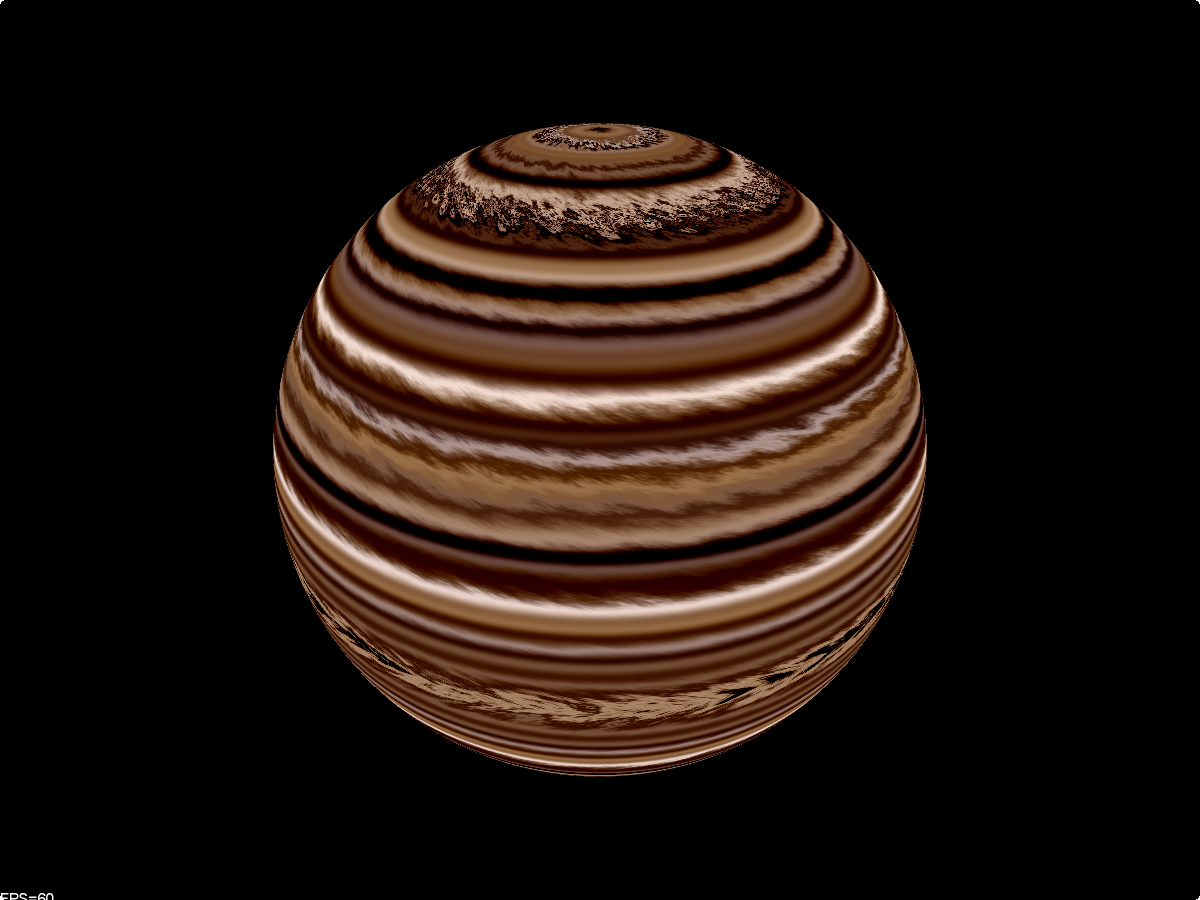
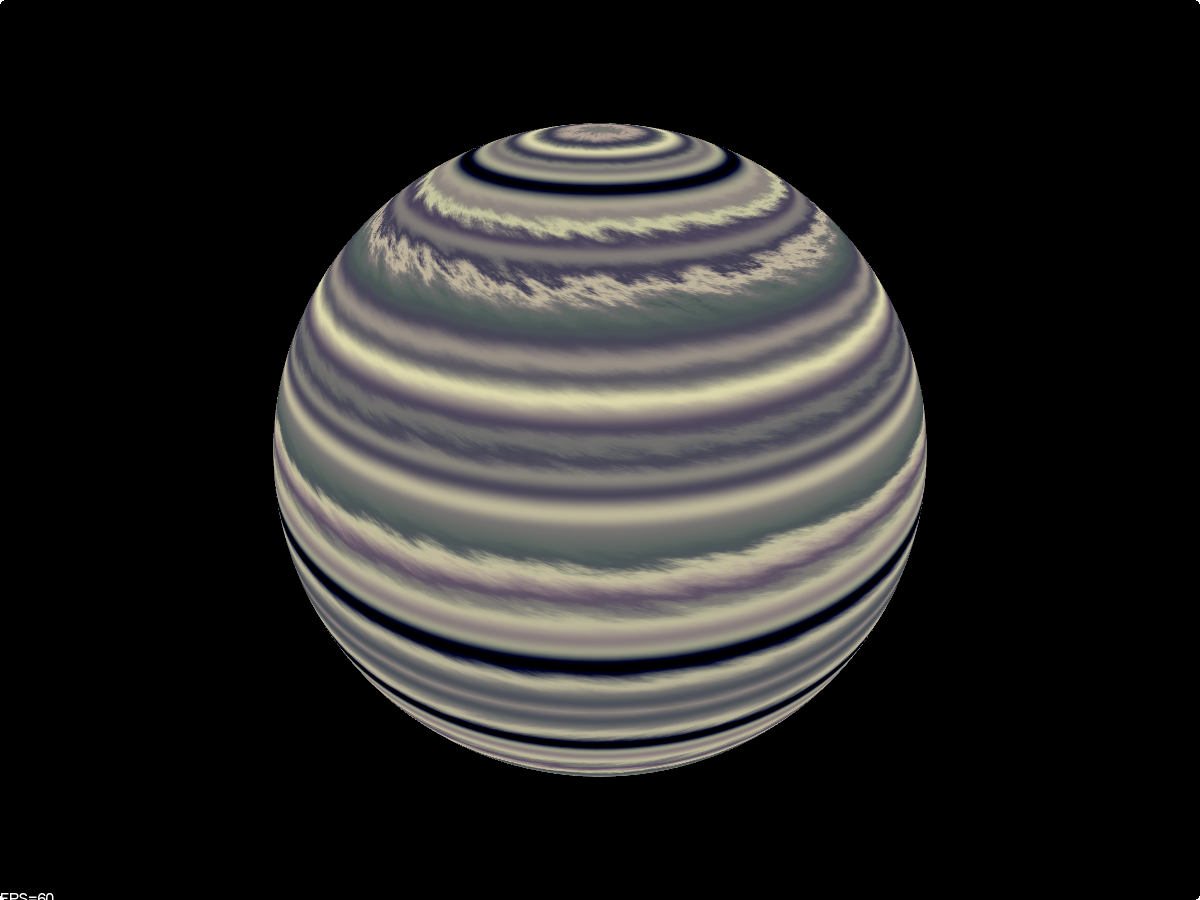
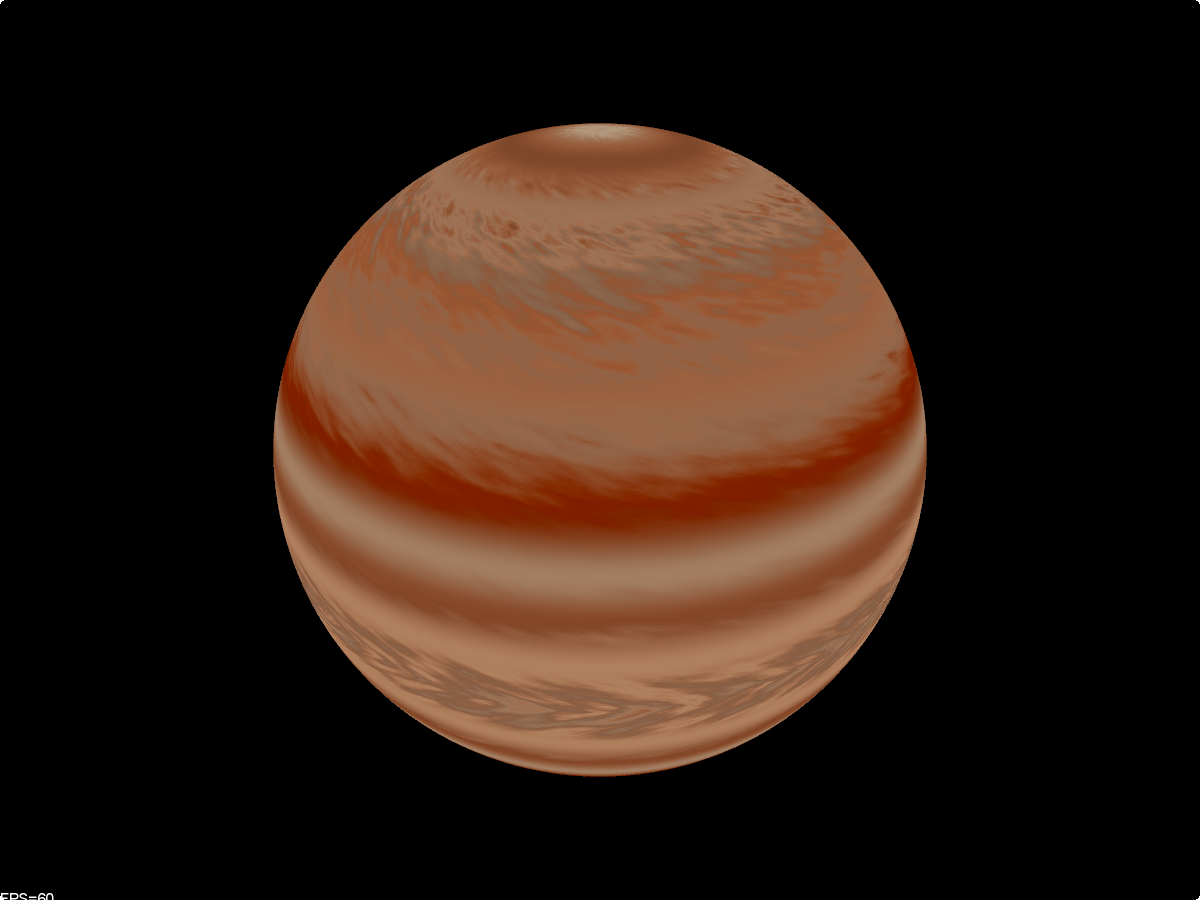
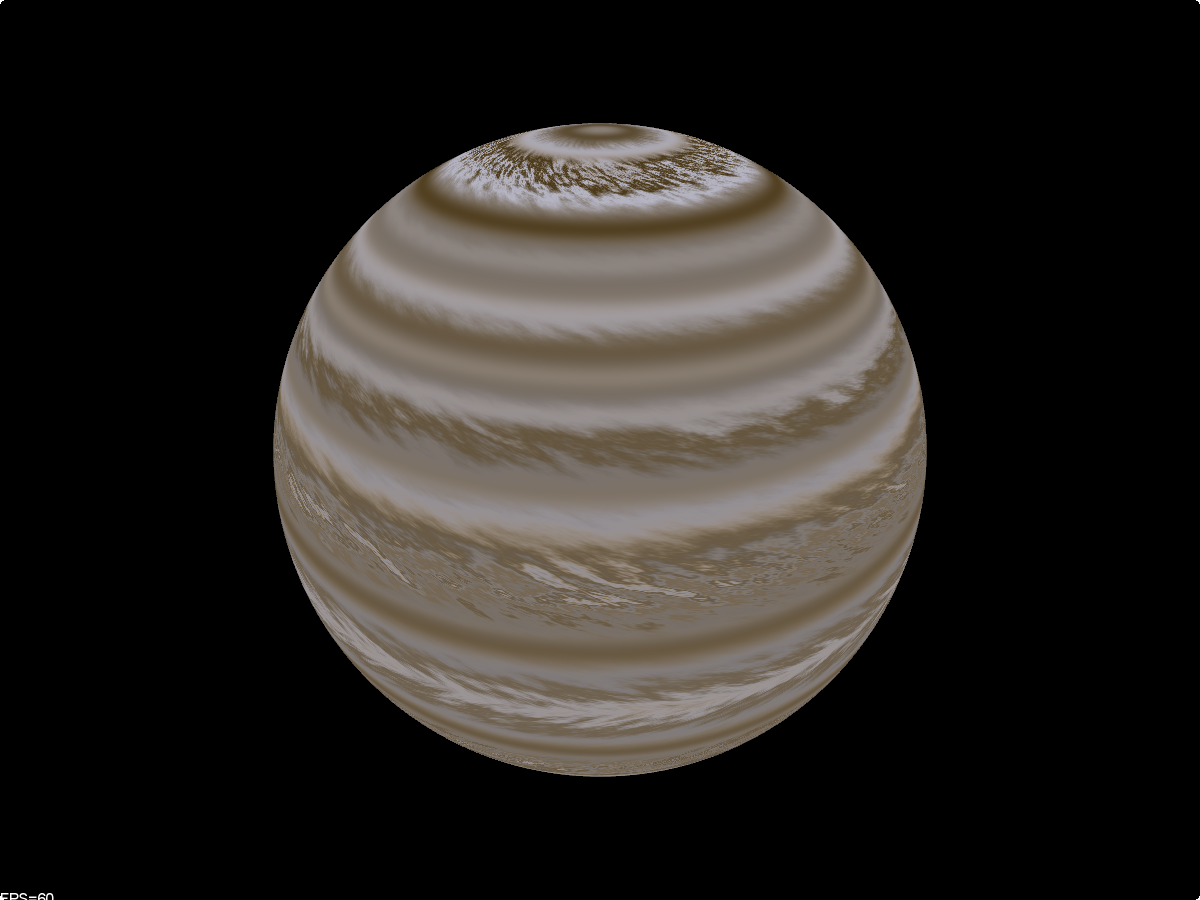
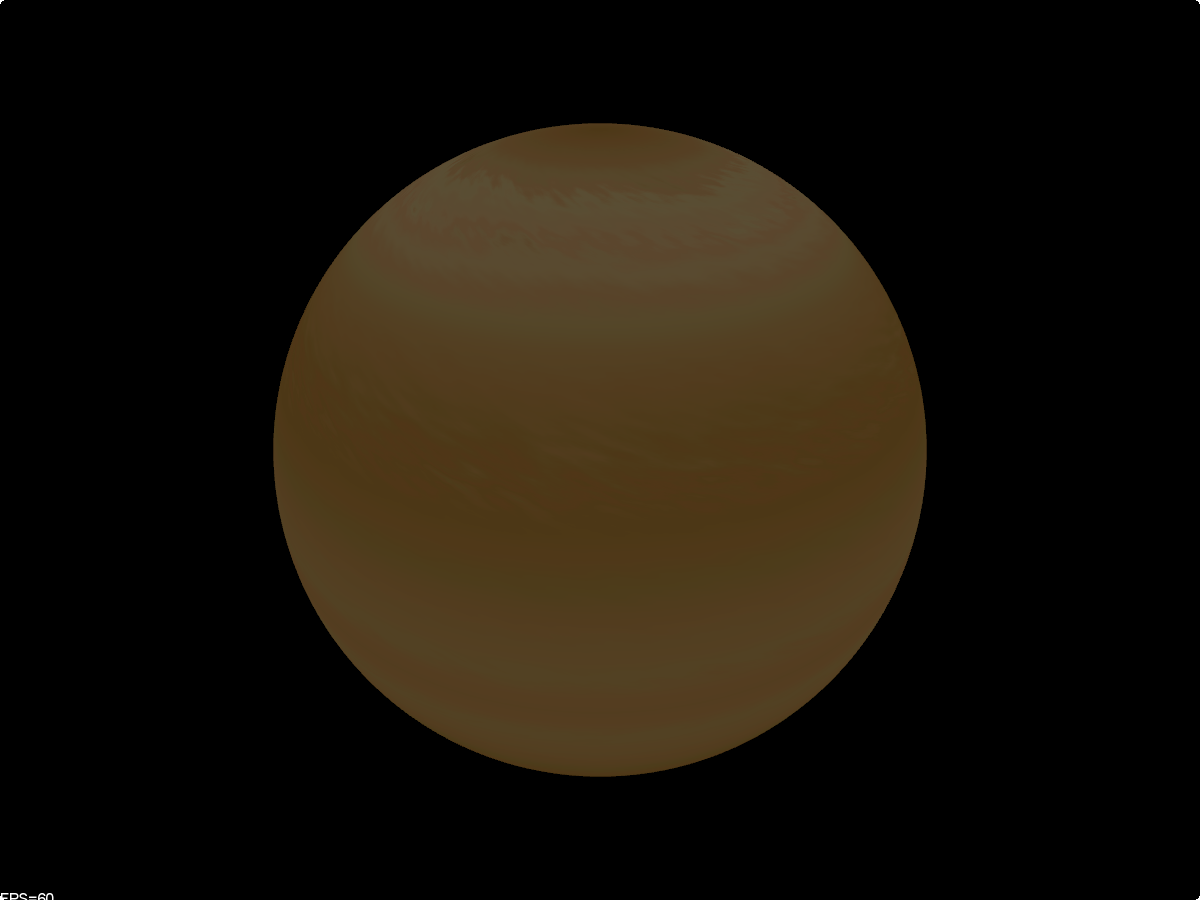
Note how the bands are every time differently distributed and that the turbulence varies from band to band as well as from planet to planet.
Again you will need the excellent noise function from noise2D.glsl.
#ifdef GL_ES
#define LOWP lowp
#define MED mediump
#define HIGH highp
precision highp float;
#else
#define MED
#define LOWP
#define HIGH
#endif
uniform float u_time;
uniform vec3 u_planetColor0;
uniform vec3 u_planetColor1;
uniform vec3 u_planetColor2;
uniform float u_random0;
uniform float u_random1;
uniform float u_random2;
uniform float u_random3;
uniform float u_random4;
uniform float u_random5;
uniform float u_random6;
uniform float u_random7;
uniform float u_random8;
uniform float u_random9;
varying vec2 v_texCoords0;
// INSERT HERE THE NOISE FUNCTIONS ...
float pnoise2(vec2 P, float period) {
return pnoise(P*period, vec2(period, period));
}
float pnoise1(float x, float period) {
return pnoise2(vec2(x, 0.0), period);
}
vec3 toColor(float value) {
float r = clamp(-value, 0.0, 1.0);
float g = clamp(value, 0.0, 1.0);
float b = 0.0;
return vec3(r, g, b);
}
float planetNoise(vec2 P) {
vec2 rv1 = vec2(u_random0, u_random1);
vec2 rv2 = vec2(u_random2, u_random3);
vec2 rv3 = vec2(u_random4, u_random5);
vec2 rv4 = vec2(u_random6, u_random7);
vec2 rv5 = vec2(u_random8, u_random9);
float r1 = u_random0 + u_random2;
float r2 = u_random1 + u_random2;
float r3 = u_random2 + u_random2;
float r4 = u_random3 + u_random2;
float r5 = u_random4 + u_random2;
float noise = 0.0;
noise += pnoise2(P+rv1, 10.0) * (0.2 + r1 * 0.4);
noise += pnoise2(P+rv2, 50.0) * (0.2 + r2 * 0.4);
noise += pnoise2(P+rv3, 100.0) * (0.3 + r3 * 0.2);
noise += pnoise2(P+rv4, 200.0) * (0.05 + r4 * 0.1);
noise += pnoise2(P+rv5, 500.0) * (0.02 + r4 * 0.15);
return noise;
}
float jupiterNoise(vec2 texCoords) {
float r1 = u_random0;
float r2 = u_random1;
float r3 = u_random2;
float r4 = u_random3;
float r5 = u_random4;
float r6 = u_random5;
float r7 = u_random6;
float distEquator = abs(texCoords.t - 0.5) * 2.0;
float noise = planetNoise(vec2(texCoords.x+distEquator*0.6, texCoords.y));
float distPol = 1.0 - distEquator;
float disturbance = 0.0;
disturbance += pnoise1(distPol+r1, 3.0+r4*3.0) * 1.0;
disturbance += pnoise1(distPol+r2, 9.0+r5*5.0) * 0.5;
disturbance += pnoise1(distPol+r3, 20.0+r6*10.0) * 0.1;
disturbance = disturbance*disturbance*2.0;
float noiseFactor = r7 * 0.3;
float noiseDistEquator = distEquator + noise * noiseFactor * disturbance;
return noiseDistEquator;
}
float jupiterHeight(float noise) {
return noise * 5.0;
}
vec3 planetColor(float distEquator) {
float r1 = u_random0 + u_random3;
float r2 = u_random1 + u_random3;
float r3 = u_random2 + u_random3;
float r4 = u_random3 + u_random3;
float r5 = u_random4 + u_random3;
float r6 = u_random5 + u_random3;
float r7 = u_random6 + u_random3;
float r8 = u_random7 + u_random3;
vec3 color1 = u_planetColor0;
vec3 color2 = u_planetColor1;
vec3 color3 = u_planetColor2;
float v1 = pnoise1(distEquator+r1, 2.0 + r4*15.0) * r7;
float v2 = pnoise1(distEquator+r2, 2.0 + r5*15.0) * r8;
vec3 mix1 = mix(color1, color2, v1);
vec3 mix2 = mix(mix1, color3, v2);
return mix2;
}
void main() {
float noise = jupiterNoise(v_texCoords0);
vec3 color = planetColor(noise);
gl_FragColor.rgb = color;
}
The colors where picked from real images of the gas and ice giants in our solar system (Jupiter, Saturn, Uranus, Neptune).
To produce more interesting results the colors are randomized by up to 10% before passing them to the shader.
Every planet receives three random colors which are then randomly interpolated.
private static final Color[] JUPITER_COLORS = new Color[] {
new Color(0.3333f, 0.2222f, 0.1111f, 1.0f),
new Color(0.8555f, 0.8125f, 0.7422f, 1.0f),
new Color(0.4588f, 0.4588f, 0.4297f, 1.0f),
new Color(0.5859f, 0.3906f, 0.2734f, 1.0f),
};
private static final Color[] ICE_COLORS = new Color[] {
new Color(0.6094f, 0.6563f, 0.7695f, 1.0f),
new Color(0.5820f, 0.6406f, 0.6406f, 1.0f),
new Color(0.2695f, 0.5234f, 0.9102f, 1.0f),
new Color(0.3672f, 0.4609f, 0.7969f, 1.0f),
new Color(0.7344f, 0.8594f, 0.9102f, 1.0f),
};
private static final Color[][] GAS_PLANET_COLORS = {
JUPITER_COLORS,
ICE_COLORS
};
public Color[] randomGasPlanetColors() {
return randomGasPlanetColors(GAS_PLANET_COLORS[random.nextInt(GAS_PLANET_COLORS.length)]);
}
public Color[] randomGasPlanetColors(Color[] colors) {
return new Color[] {
randomGasPlanetColor(colors),
randomGasPlanetColor(colors),
randomGasPlanetColor(colors)
};
}
public Color randomGasPlanetColor (Color[] colors) {
return randomDeviation(random, colors[random.nextInt(colors.length)]);
}
private Color randomDeviation (Random random, Color color) {
return new Color(
clamp(color.r * nextFloat(random, 0.9f, 1.1f), 0.0f, 1.0f),
clamp(color.g * nextFloat(random, 0.9f, 1.1f), 0.0f, 1.0f),
clamp(color.b * nextFloat(random, 0.9f, 1.1f), 0.0f, 1.0f),
1.0f);
}
